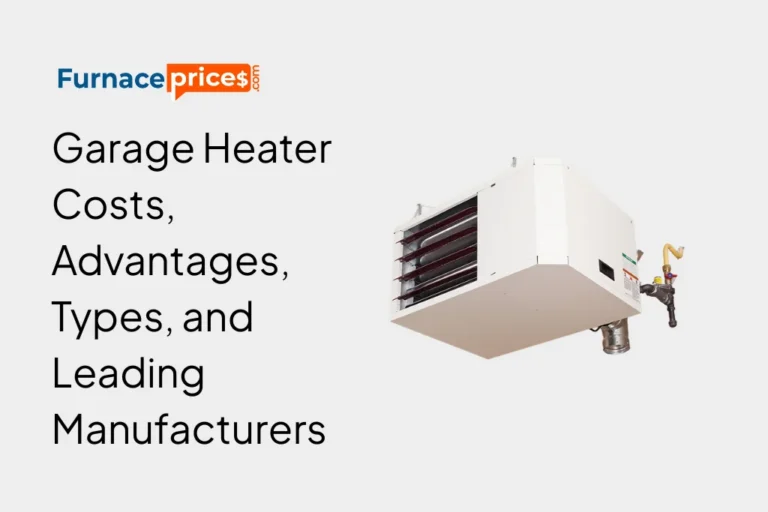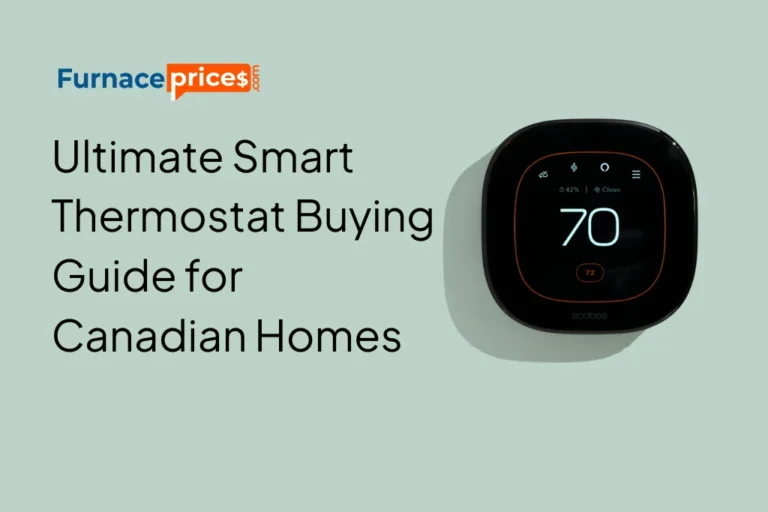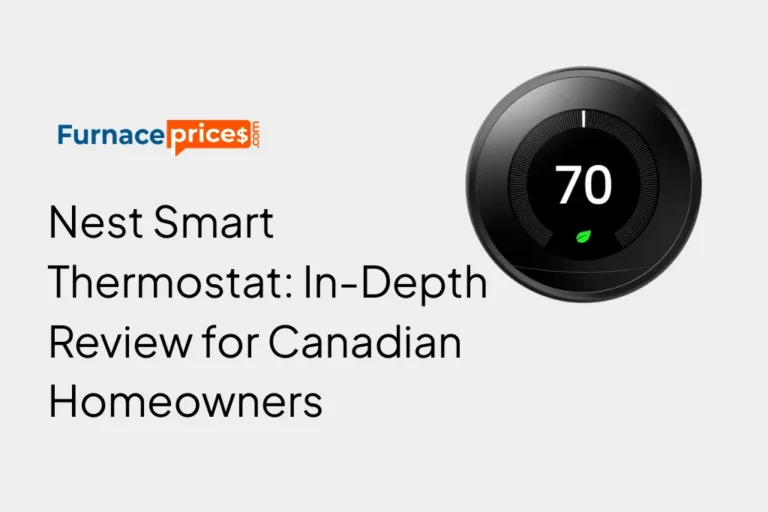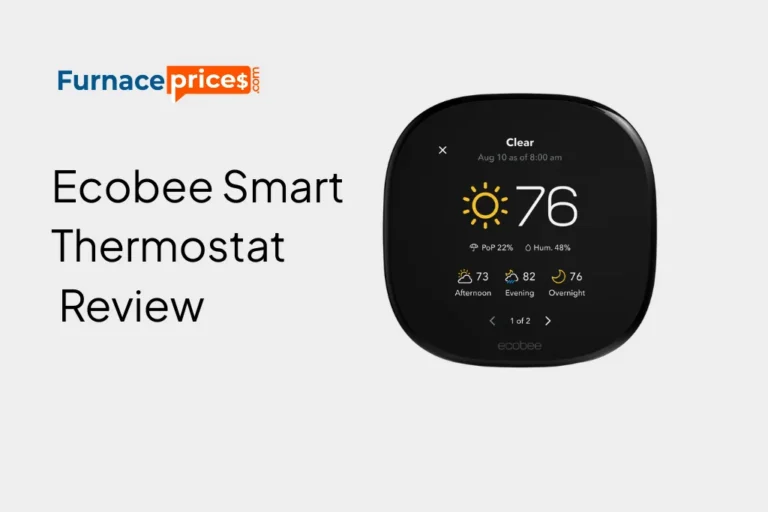How Smart Thermostats Work: Your Expert Canadian HVAC Guide to Efficiency & Comfort
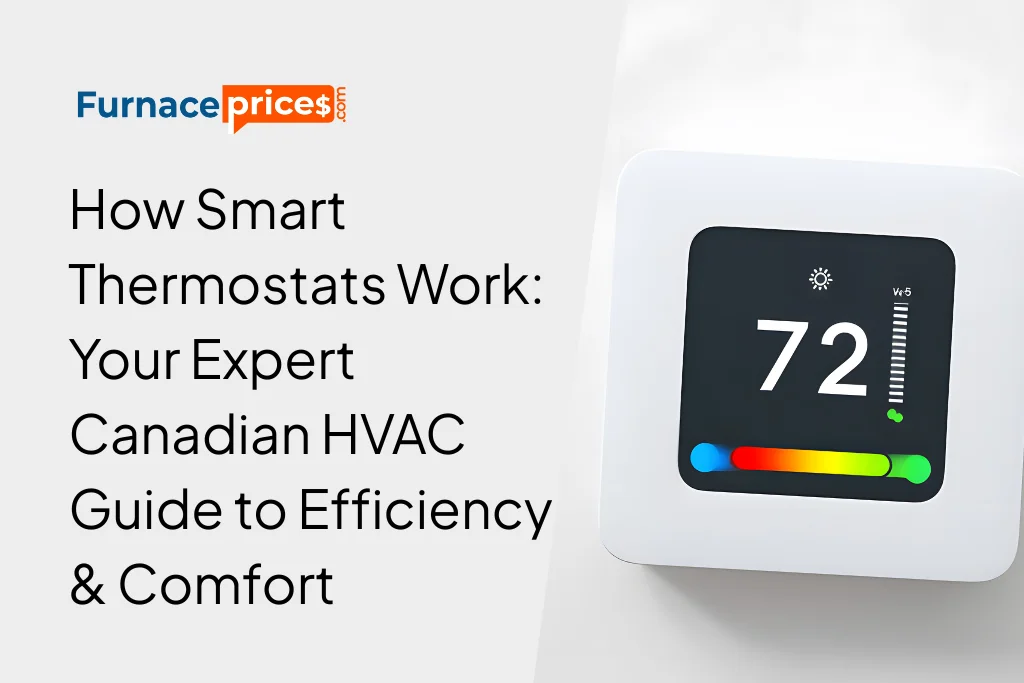
Introduction
If you are considering upgrading to a smart thermostats for your residence, understanding their operation is key. Here is a comprehensive overview of everything a Canadian homeowner needs to know about modern, connected thermostats.
Understanding Smart Thermostats
To begin, let’s review the fundamental features that distinguish a smart thermostat from a conventional or programmable model.
These contemporary devices connect to your home’s Wi-Fi network and communicate with a dedicated mobile application, allowing you to manage heating and cooling settings directly from your smartphone or tablet. They also often integrate with popular Canadian smart home platforms, like voice assistant systems.
Crucially, a signature capability of smart thermostats is their ability to establish highly optimized heating and cooling schedules. While you can set these programs manually, the device can also learn your household’s routines—when people are typically home and when they are away—to create a dynamic schedule that avoids unnecessary energy consumption.
For instance, when your home is vacant, the system will not run the air conditioning or furnace at full capacity. It can, however, begin heating or cooling the space in advance of your typical arrival time, ensuring maximum comfort the moment you walk through the door.
Furthermore, a smart device consistently records and analyzes data, providing detailed reports on your home’s energy consumption and the effectiveness of your heating and cooling patterns.
As you will discover, the advantages of a smart thermostats extend beyond simple convenience. Not only will your living environment be more comfortable, but an optimized heating and cooling system can lead to substantial long-term savings on your utility bills over many years.
Compatibility With Your Existing HVAC System
A common question for homeowners, especially those in Ontario and across Canada with older properties, is whether a smart thermostats can connect to their existing heating and cooling system. In the vast majority of cases, a suitable smart device can be found to pair with your home’s setup.
That said, identifying the precise device needed and ensuring its correct installation is not always a straightforward task. HVAC system configurations vary significantly depending on the age and type of equipment (e.g., forced air furnace, heat pump, boiler). It is essential to understand the technical requirements of your current system before committing to a purchase.
For this reason, engaging a qualified HVAC professional throughout this process is a wise decision. These experts can assess your current system, determine the best-suited smart thermostats for compatibility, and perform the installation safely and correctly.
Attempting a do-it-yourself setup without the requisite knowledge risks incorrect wiring, which can lead to reduced efficiency or, in the worst-case scenario, damage to your existing heating and cooling equipment. Professional insight streamlines the process, ensuring a secure and seamlessly integrated home system.
Occupancy Sensing Technology
One of the more advanced components of a smart thermostat is the occupancy sensor. This feature typically uses infrared technology to detect the presence of people in the area where the unit is situated.
So, if you install a smart thermostat in your primary living space, it will register when occupants are present. More sophisticated units may even develop a routine based on the usual times people are in certain areas of the home. It can then strategically delay or moderate heating and cooling in unoccupied zones to reduce energy use and save you money.
However, the sensor generally requires movement to register occupancy. This can be tricky if the unit is positioned in a low-traffic part of the room or if you are stationary in various areas of the home without the device detecting you.
Therefore, this sensing capability is most effective when the thermostat is located in a high-traffic area, such as a main hallway or common area you pass through when coming and going. You always have the option to override this feature and manage the settings according to your own predetermined schedules.
If your schedule is highly irregular or if multiple individuals are in the home at any given time, crafting a manual, customized heating and cooling schedule often proves to be the most reliable and efficient approach.
Remote Connectivity via Mobile Application
You might wonder why a thermostat needs an internet connection at all. The primary advantage is the ability to make adjustments to your climate control from literally anywhere in the world.
The companion app on your mobile device provides complete remote access to almost every setting of your heating and cooling system. This is incredibly useful for situations where you forget to set the system back before leaving for work, for example. It is also convenient if a guest or family member is arriving while you are out, allowing you to ensure the home is comfortable for them in advance.
Regardless of how you use it, having complete, anytime control over your home’s temperature offers unparalleled flexibility and peace of mind.
Smart thermostats may also transmit operational data back to the manufacturer for broad analytical purposes. Data on collective heating and cooling patterns is valuable for scientific objectives, primarily related to improving energy efficiency and addressing climate-related challenges.
Understandably, some people are cautious about sharing personal data or having devices on their walls that monitor activity. This is why most devices offer clear options, allowing you to choose whether or not this kind of information is collected and used.
Zoning Capabilities
Another powerful aspect of certain smart thermostat systems is their ability to enable zoning within your home. This means you can regulate the temperatures of specific rooms or areas independently, rather than heating or cooling the entire structure uniformly.
While zoning technology has been available for some time, many Canadian homes still operate on a single-point system that requires heating or cooling the entire space simultaneously. At best, many single-zone systems allow for regulating a main floor separately from a basement or second storey. This often leads to homeowners relying on energy-intensive solutions like portable space heaters or window air conditioning units to optimize specific rooms.
These stand-alone devices, when run continuously, can be very costly.
Zoning is an exceptional way to personalize your home’s climate control. Different individuals often have unique temperature preferences for their rooms, and it’s important to accommodate this without drastically inflating your energy bill.
Effective zoning stands as one of the most impactful ways to decrease your heating and cooling expenses. A large amount of energy is often wasted heating or cooling entire homes where certain areas are rarely used.
Consider how much time specific rooms in your home are vacant. If you live alone, only the rooms you occupy require the perfect temperature. With an older, unzoned system, a significant portion of your house may be heated or cooled around the clock, even when those spaces are completely empty.
Integration with Current Smart Home Ecosystems
A major benefit of modern smart thermostats is their capacity to integrate seamlessly with other smart devices in your home. It’s crucial to ensure the specific model you select is compatible with your existing smart home platform, but there are numerous options available that work across different systems.
This integration is key to comprehensively managing energy consumption and allows you to control multiple devices—from lighting to security—from a single application or platform interface.
Long-Term Financial Benefits
All the aforementioned features contribute to ensuring you are not overspending on utility bills. The initial investment in purchasing and installing a quality smart thermostat is minimal compared to the significant amount of money you can save over its operational lifespan.
It is challenging to state a precise savings figure, but a system that is well-optimized to your family’s routine will dramatically cut costs. If you are currently heating or cooling large, unused sections of your home all day, the reduction gained from zoning and learning capabilities will be notable.
Various industry estimates suggest that savings on heating and cooling expenses can range from 10 to over 20 per cent, depending heavily on the Canadian climate zone you live in (e.g., the frigid Ontario winter vs. milder coastal regions). The actual value will also depend on your current usage habits, your preferred temperature settings, and your home’s overall insulation efficiency.
Nonetheless, these savings accumulate substantially over time. Within a few years, a smart thermostat can easily save homeowners hundreds or even thousands of dollars.
Environmental Responsibility
The positive impact of smart devices extends beyond home savings and comfort. The issue of climate change is a genuine global concern that impacts Canadian communities directly.
While large-scale systemic factors are major contributors, our collective personal choices also play a role. Adjusting our consumption habits to use less energy can help shift the balance and benefit the environment.
Implementing a smart thermostat may seem like a small action, but it genuinely makes a difference in reducing your household’s environmental footprint. The great benefit is that many choices that benefit the environment also offer personal advantages to homeowners.
Investing in smarter climate control for your home, for example, turns out to be a smart investment in conservation as well.
Assessing and Upgrading Your Home HVAC System
Many of us often neglect the necessary maintenance and care required for our HVAC systems. Consistent upkeep and timely repairs are vital for efficiency and safety.
It is critical to remember that your heating and cooling equipment directly influences your home’s indoor air quality. These systems offer more than just comfort; they are essential for the health and wellness of your family.
Many older Canadian homes are equipped with systems that contain dated components, potential sources of contamination, and design flaws that lead to significant energy losses. Installing a new, high-efficiency system or adapting your current one might be a sensible move for your home’s future and value.
Furthermore, some essential adjustments or upgrades may be required for your existing system to properly support a smart thermostat installation. It is always beneficial to have a licensed HVAC professional inspect your system to confirm everything is operating safely, efficiently, and up to current code.
Key Considerations When Selecting an HVAC Service Provider
If you are planning system changes or installation, you will need to find the right HVAC company for your specific needs.
Not all service providers have the same track record, and it’s crucial to find a highly qualified team to perform work in your residence. The first point of verification is confirming the company and its technicians possess the necessary licensing and certification. HVAC work should only be entrusted to individuals who have undergone proper, rigorous professional training.
The most reputable professionals often have specialized, advanced training from equipment manufacturers. For example, a technician might have in-depth knowledge of your home’s existing furnace model and know precisely how to service it. They can also offer expert advice on the best smart thermostat models to pair with your specific equipment.
The company you hire should also provide a formal guarantee or insurance for the work they complete. This coverage should encompass the active repair or installation process as well as potential, though rare, issues that could surface after the project is considered finished.
You should also thoroughly review the company’s customer feedback and reputation. Ensure that previous clients have had positive experiences and actively recommend their services.
A trustworthy HVAC provider will give you a clear, detailed explanation of the expected costs and adhere closely to that upfront quotation. While online reviews can be helpful, it is important to exercise caution, as some sites may contain unreliable or misleading information.
We are dedicated to helping Canadian homeowners find the ideal, most reliable provider for their needs.
Seeking a Reliable HVAC Specialist?
Smart thermostat are an excellent enhancement for any heating and cooling system. The challenging part for many homeowners is locating the right, qualified professionals to partner with for installation and service. Our platform specializes in providing trustworthy comparisons and reviews of various reputable companies, helping you select the best provider for your home.
For more information on energy efficiency standards and incentives in Canada, visit Natural Resources Canada.
📞 Have questions? Contact us or email us at contact@furnaceprices.com.
✅ Start comparing today and make the right choice with confidence!


